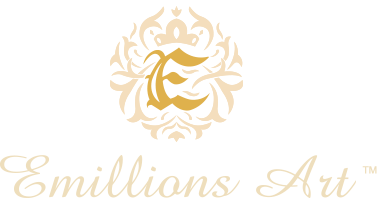“Forensics,” or art forensics, refers to the scientific and investigative techniques applied to the analysis of artworks to uncover hidden information, authenticate works, determine their condition, or reveal alterations and forgeries. This interdisciplinary field combines principles of art history, materials science, chemistry, and technology to provide insights into artwork creation, history, and preservation.
Key components of art forensics include:
Technical Analysis: Forensic experts use a variety of scientific techniques, including imaging, spectroscopy, and microscopy, to examine the physical and chemical properties of art materials, such as pigments, binders, and substrates. These analyses can reveal details about an artwork’s composition and authenticity.
Provenance Research: Forensic research may involve tracing an artwork’s history through archival records, provenance documents, and scientific analysis of materials to establish its origin and ownership chain.
Conservation and Restoration: Art forensics can be employed in the field of conservation to assess an artwork’s condition, identify damage, and inform restoration strategies. This is crucial for preserving the artwork’s integrity.
Authentication: Expert forensic analysis can assist in authenticating artworks by comparing their materials and techniques with those known to be used by the artist. This process helps determine if the work is genuine or a forgery.
Imaging Technology: Advanced imaging technologies like X-radiography, ultraviolet (UV) and infrared (IR) imaging, and multispectral analysis can unveil hidden elements, such as underdrawings, pentimenti, or overpainting, shedding light on the artist’s creative process.
Pigment and Dye Analysis: Analyzing pigments, dyes, and other materials used in an artwork can provide insights into their composition, origin, and dating. This is particularly useful for dating and identifying materials in ancient and historical artworks.
Fingerprint Analysis: In some cases, fingerprint analysis may be applied to identify the artist or individuals involved in the creation of an artwork.
Ink Analysis: Forensic experts can analyze the ink used in signatures, inscriptions, and annotations to verify their authenticity and consistency with historical records.
Document Examination: When dealing with historical documents, provenance research may include forensic document examination to verify signatures, dates, or authorship.
Legal and Ethical Considerations: Art forensics professionals adhere to legal and ethical standards, ensuring the transparent and objective handling of artworks and their analysis.
Art forensics is a valuable field in academic art history and conservation, as it contributes to understanding an artwork’s history, authenticity, and condition. It aids in resolving questions related to provenance, restoration, and the detection of forgeries, ensuring the integrity of the art world and the preservation of cultural heritage. Researchers and scholars rely on the insights provided by art forensics to deepen their understanding of artistic processes and materials.



